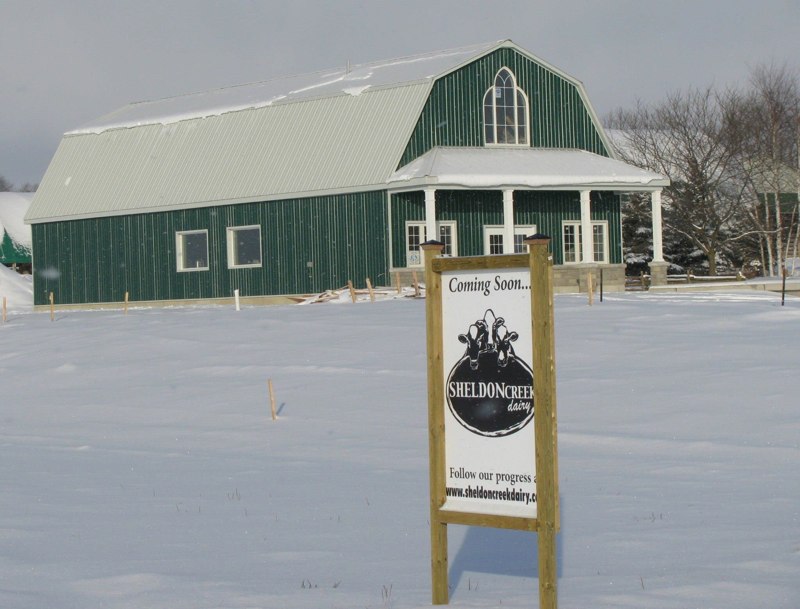March 26, 2013
“We believe in providing ‘food with a story’, a connection with real people.” (John den Haan)
Nestled within the rolling hills of Sheldon Valley lies Haanview Farm, a third generation dairy farm started by Adrianus and Maartje den Haan in 1953 with their first cow, Maggie.
Fast forward almost 60 years to John and Bonnie den Haan’s newest project: Sheldon Creek Dairy. After a year of preparation, the den Haans held the grand opening of the dairy at the end of June 2012.
As Bonnie reports, “We decided to build the dairy in response to a growing desire for whole milk produced locally. Naturally, all of our milk comes from the Haanview herd.”
Upon deciding to build the dairy, the den Haans obtained a Nottawasaga Futures Community Investment Loan, which they have used to help make the dairy as green as possible.
Among the long list of energy-efficient design elements are the following:
Beginning with the pasteurization unit itself, the den Haans installed a High Temperature Short Time (HTST) unit. Using a heat recovery process to warm incoming milk, 90% of the energy is reclaimed.
A similar design has been installed for the bottle washing machine that will be used to clean the recycled bottles – all 36,000 of them! By capturing the heat from the water vapour during the washing cycle, the heat is used to preheat the inlet water to 140 degrees Fahrenheit, well on its way to the 180 degrees required for sterilizing the bottles. Because of the heat recovery design, the washer does not require any venting of the exhaust, providing further savings for the owners.
Additional heat is reclaimed from the various compressors in the dairy and used to heat stored water that is then later used for cleaning.
In-floor heating has been installed which maintains a comfortable working temperature in key production areas, rather than heating the air in the high-ceiling spaces, including the 19-foot high processing room.
Low-cost, energy-efficient building design includes under-the-floor insulation, two-inch SM insulation on the foundation perimeter, both inside and out, ¾ inch foil back on all exterior walls and interior cooler walls, and six inches of insultation in the roof.
Efficient T5 fluorescent lighting with occupany sensors have been installed throughout the plant. They have also selected LED light fixtures for the exterior of the building, which are more efficient and reduce maintenance costs over traditional outdoor lighting.
Benefits from going green
Operating an environmentally-conscious business has always been important to the den Haans, and the energy-efficent design of the dairy is an extension of that practice. However, they also recognize the significant cost savings associated with those decisions. For example, the HTST system is approximately two to three times more energy efficient than alternative batch pasteurizers.
Similarly, they estimate the cost savings from the ventless bottle washer will be over one thousand dollars per year.
The use of their own customized, returnable and reusable glass bottles will also save them significantly over time, while helping to reduce waste by recycling the bottles.
Locally produced food is an increasingly important part of our rural economy. For the den Haans, food with a story is about connecting their customers with the local land, the Haanview cows and the people involved with producing the food. “For us, it is a business, but it is also our passion.”




